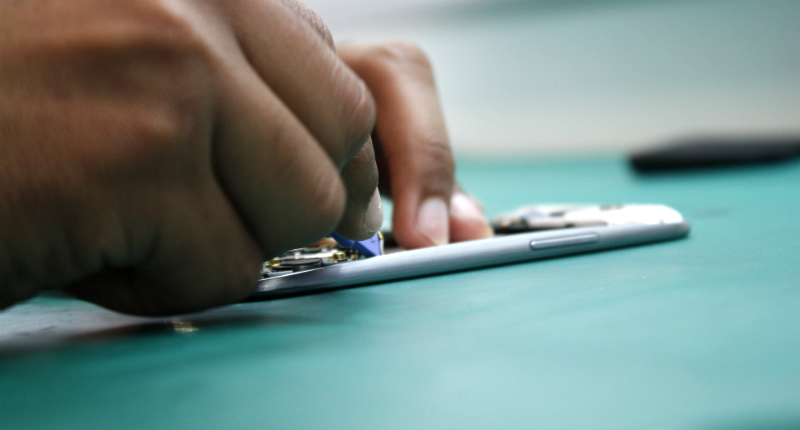It happens to the best of us.
A few months ago I was preparing for a night out on the town with friends and a few drinks. While waiting for my Uber, I idiotically balanced my phone on the sink while freshening up. Naturally, I knocked the device off onto the cold, cold tile floor. Silly me.
No ad to show here.
The Samsung’s display was now completely black — with only one tiny crack in the LCD.
The Uber arrived nonetheless and heading back home, well, required hailing a cab like they did in the heydays. Needless to say, this was only one of the many inconveniences I had to face without my trusty companion by my side for the next few days. No WhatsApp, no Google searches, no laughs courtesy of 9gag.
But then again, no late night emails either.
The crack was nearly invisible. And if it wasn’t for the fact that the entire display now only served as a black mirror, I wouldn’t really have minded too much about it all.
Luckily, local repair shop iFix offered to take care of my woes, testing out its Plus membership offering in the process.
The deal is simple: you pay R69 per month or R700 per year, and get your device repaired for only R250. This is incredibly cheap for the average smartphone user who wouldn’t necessarily have R2000 or so lying around to fork out for a quick screen fix. Or those users who perhaps dip their fingers in butter daily.
Ultimately, thanks to my broken Samsung, Gearburn got a taste of the entire repair process, from the little S3 gathering up dust in my bedroom closet to being ripped to pieces just to be put back together again on a repair desk.
I booked my phone in at the closest iFix outlet, which was at Canal Walk in Century City, just outside of Cape Town. Although you can have your device couriered to the closet repair shop, I obviously drove through to experience the whole process first-hand.
Phones break at the clumsy hands of people. That’s a fact
The service was a breeze. All in all, taking the S3 apart, replacing the LCD, putting it back together and testing it took about 25 minutes. This was ample time to do some window shopping or grab a cup of joe.
Read more: Nexus 7: how to replace a faulty USB port
After signing in with the iFix store’s dedicated iPad app at the front desk, I left the smartphone in the delicate hands of customer support. The device was then escorted to the back offices, where about five or so technicians (all geared with antistatic wrist straps) are constantly powering through pieces of hardware.
Once in the workshop, each device is placed in a locker where it will remain at the back of the queue. As soon as the device gets the greenlight after final testing, it goes back into the locker where it will be ready for collection. You can of course opt for iFix’s express option, where the device will be bumped up to the front of the queue.
As suspected, my poor S3’s cracked screen was the most common of all conditions the technician team has to deal with on a day-to-day basis. Cracked screens are followed by faulty batteries. For some reason, we have to learn the hard way in getting protection.
The service was a breeze
My device was placed on a green rubber mat where the technician eagerly pried open the corners, sliding out the hardware. First the battery came out, then the motherboard, then the SIM dock, and the lens cover followed.
Luckily, my waiting time was nearly cut in half for not having an iPhone.
iPhones are said to be the most difficult to repair, and will likely take about 20 minutes extra compared to your average smartphone. That’s because Apple products have more screws and most parts are glued together.
It wasn’t long before the technician fitted a brand new LCD into the chassis.
The S3 then underwent the standard device testing. By dialling the digits *#0*#, your device takes you through the AB testing of phones — from colours to touch and vibration. After thorough testing by the technician, the phone was handed back to me, booked out at customer care, and boom.
It’s done.
Phones break at the clumsy hands of people. That’s a fact. Otherwise iFix wouldn’t have grown at such a rapid rate, boasting 17 stores across South Africa while sending an average of 10 000 iPhones per month to the digital ER.
Having the peace of mind that you’d only have to fork out a couple hundred bucks to get your otherwise R10 000 device fixed helps a lot. But you should probably, in any case, be a little more careful when handling your best digital friend (I’ll be sure to take that advice from now on too).
Disclaimer: the Samsung Galaxy S3’s repair was performed courtesy of iFix.
